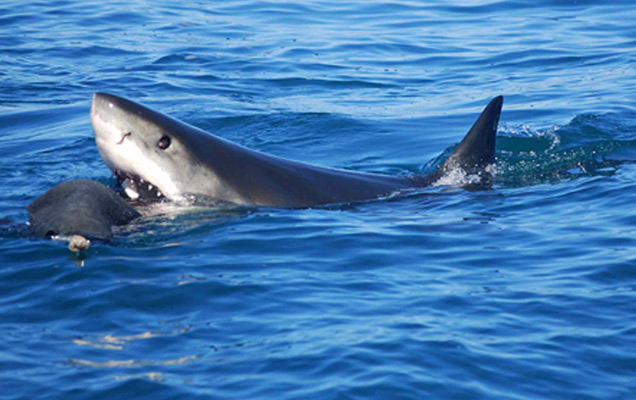Credit: University of California, Davis
The first survey of great white sharks off the coast of central California has turned up fewer of the top predators than biologists had expected. To count the sharks, scientists braved ocean swells in small boats and used a seal decoy to lure sharks in for a portrait (see photo). From 321 photographs of dorsal fins, which are as unique as fingerprints, they identified 131 individuals. They estimate that the entire population consists of 219 adult and immature sharks. That's a substantially smaller population than that of another large marine predator whose numbers were reduced in the 19th and 20th centuries by whaling and other human activities: killer whales, which number around 1145 in the same area. The researchers worry that other great white populations may also be smaller than expected, and they urge further protections for the species—which the International Union for Conservation of Nature now classifies as only vulnerable to extinction. The study appears in the current issue of Biology Letters.
See more ScienceShots.
by
Virginia Morell
Posted in
Oceanography
